Studio-Era Hollywood’s Still-Beguiling Screen Sphinx
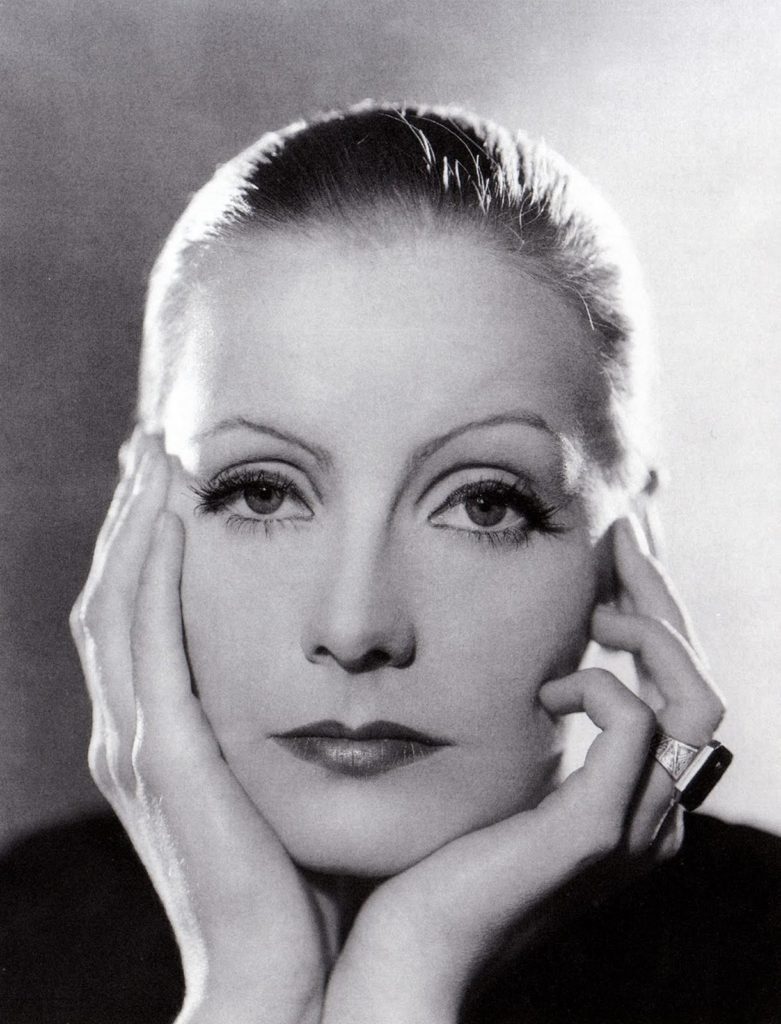 “There just aren’t any faces like that any more. Well, maybe one – Garbo.”
“There just aren’t any faces like that any more. Well, maybe one – Garbo.”
From evocative titles for silent productions such as Torrent, Temptress, Flesh and the Devil, and The Divine Woman, through the 1930 campaign of “Garbo Talks!” with the dramatically powerful Anna Christie, to finally the Box Office Poison cure of “Garbo Laughs!” with 1939’s romantic comedy Ninotchka, the screen legend of Greta Garbo reveals the oft-unfathomable mystery of true Classic Hollywood star power. In 24 starring film roles, essayed in a 16-year period at one Hollywood studio, MGM, Garbo represented the exotic and ultimately unknowable qualities encapsulated in another of her early titles, The Mysterious Lady (1928), for filmgoers marveling, heads upturned, at a luminous image captured tantalizingly in soft-lit focus on the golden ratio of silent-era silver screens. Concealing more behind those velvet-tinged eyes than they ever possibly revealed, if there was one Hollywood actress born for the close-up, it was undoubtedly Garbo.
In her two greatest roles, that of Queen Christina in the 1933 Rouben Mamoulian film and as the terminally-ill courtesan Marguerite in George Cukor’s Camille (1937), the quiet intensity and subtle playing of morally difficult and ambiguously drawn characters reach a height of screen perfection that might give even the staunchest of directorial auteurists pause before dismissing the actress’s output as mere “star vehicles”.
Born Greta Gustafsson to a working class family in Stockholm, Sweden in September of 1905, young Greta entered the Swedish film industry as a fashion model for a chain of department stores in her early teen years, eventually capturing the attention of prominent producer and director Mauritz Stiller while studying in Stockholm’s Acting School for its Royal Dramatic Theatre. Chiefly responsible for creating her distinctive “look”, along with giving/gifting the young actress the name of “Garbo”, Stiller cast the 18-year-old in the difficult and demanding role of Elizabeth Dohna, opposite Swedish matinee idol Lars Hanson, in his two-part, 1924 screen epic The Saga of Gösta Berling. Her performance and subsequent appearance in G.W. Pabst’s Joyless Street (1925) became her calling cards in Hollywood, and within a year the now-fully christened “Greta Garbo” was being groomed for stardom by MGM’s head of production Irving Thalberg, who perceived an “experience” in the young actress that belied her years.
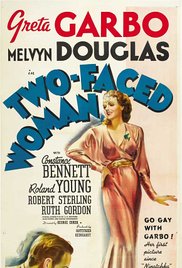 The 24 films that followed – all produced, again, at Classic Hollywood’s “Rolls Royce” among film studios, MGM – represent a body of film work rich in variety and filled with moments of revelation for casual film viewers and screen scholars alike. In her two greatest roles, that of Queen Christina in the 1933 Rouben Mamoulian film and as the terminally-ill courtesan Marguerite in George Cukor’s Camille (1937), the quiet intensity and subtle playing of morally difficult and ambiguously drawn characters reach a height of screen perfection that might give even the staunchest of directorial auteurists pause before dismissing the actress’s output as mere “star vehicles”. Retiring from films at the age of thirty-six, after the perceived failure of the 1942 romantic comedy Two-Faced Woman, the legend of Garbo nevertheless remains as one of the few screen actors who successfully bridged the gap between silent films and sound films, and who subsequently remained in the public eye despite leaving it forever.
The 24 films that followed – all produced, again, at Classic Hollywood’s “Rolls Royce” among film studios, MGM – represent a body of film work rich in variety and filled with moments of revelation for casual film viewers and screen scholars alike. In her two greatest roles, that of Queen Christina in the 1933 Rouben Mamoulian film and as the terminally-ill courtesan Marguerite in George Cukor’s Camille (1937), the quiet intensity and subtle playing of morally difficult and ambiguously drawn characters reach a height of screen perfection that might give even the staunchest of directorial auteurists pause before dismissing the actress’s output as mere “star vehicles”. Retiring from films at the age of thirty-six, after the perceived failure of the 1942 romantic comedy Two-Faced Woman, the legend of Garbo nevertheless remains as one of the few screen actors who successfully bridged the gap between silent films and sound films, and who subsequently remained in the public eye despite leaving it forever.
Join our contributors, then, as we attempt to grapple with the mystery, to explain her enigmatic appeal, through our first-time reactions to a selection of films from Hollywood’s still-beguiling screen sphinx, Greta Garbo.
Grand Hotel
(1932, Metro-Goldwyn-Mayer, dir. Edmund Goulding)
by Krystal Lyon
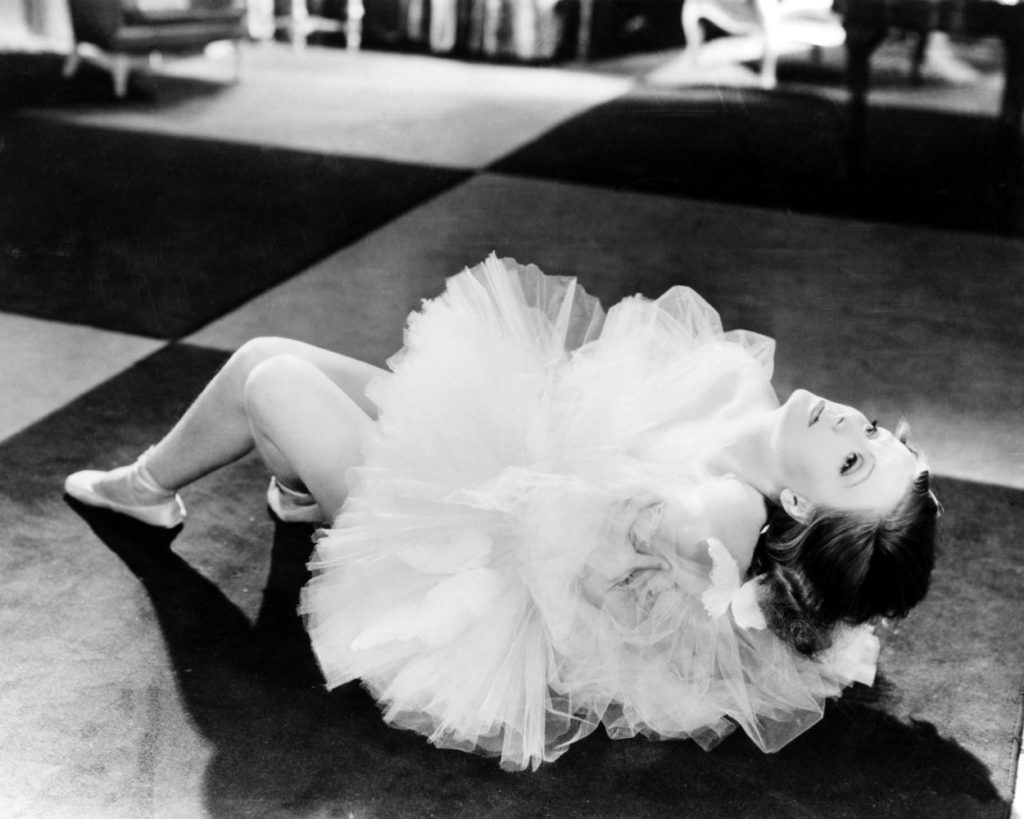
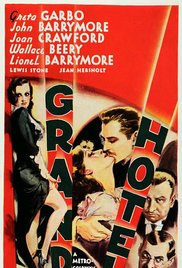 “Grand Hotel… always the same. People come, people go. Nothing ever happens...” But behind those closed doors, on the verandas and in that fantastic Yellow Room there is love, jealousy, freedom and mercy at the Grand Hotel. And it’s happening to the biggest names in Hollywood. Two Barrymores, Lionel and John, one big eyed Joan Crawford and the stunning Greta Garbo. At first I was taken with Crawford, her beauty and cat-like confidence had me wondering why Garbo was the star. But as I watched, it was the quietness and complexity of our birthday girl Garbo that won me over.
“Grand Hotel… always the same. People come, people go. Nothing ever happens...” But behind those closed doors, on the verandas and in that fantastic Yellow Room there is love, jealousy, freedom and mercy at the Grand Hotel. And it’s happening to the biggest names in Hollywood. Two Barrymores, Lionel and John, one big eyed Joan Crawford and the stunning Greta Garbo. At first I was taken with Crawford, her beauty and cat-like confidence had me wondering why Garbo was the star. But as I watched, it was the quietness and complexity of our birthday girl Garbo that won me over.
Grand Hotel is fascinating. People meet, stories get complicated, pearls are stolen. The drama heightens as characters become more intertwined. The entire film stays in the hotel and if a person leaves you aren’t privy to their shenanigans at the theater or elsewhere. Garbo plays the beautiful and dramatic ballerina Grusinskaya. She falls madly in love with Baron Felix von Geiger, aka Flix, (John Barrymore) a card playing jewel thief with a noble heart of gold. I was suspicious of this instant love with the thief and Garbo’s dramatic fits of ennui. Who falls in love with a man hiding in their closet? But as the stories at Grand Hotel unfold my skepticism turned to devotion.
Garbo’s famous line, “I want to be alone” is a quiet cry that’s relatable. As I learned about Garbo’s own struggle with fame and limelight, her character Grusinskaya became more realistic as did her love for Flix. Flix is other and he is an escape, someone she can fall into and a way to disappear. Garbo’s own dualities and complexities are what make her so attractive. Unlike the brass cleverness of Crawford’s character Flaemmchen, Garbo’s Grusinskaya is reserved but truthful when she speaks. By the end of Grand Hotel your heart breaks for Grusinskaya and you wonder what will happen when she arrives at the train station? But as people leave the Grand Hotel their stories end and others check in and start new stories for us to observe. It’s totally brilliant!
Grand Hotel is my first Greta Garbo, I’m already looking forward to more. Watch it for the wonderful story telling, for Crawford’s flirtiness, for the grand style and luxuriousness of a bygone era and for Garbo. To quote Flix, “I’ve never seen anything in my life as beautiful as you.” Happy birthday you Swedish Sphinx!
Anna Karenina
(1935, Metro-Goldwyn-Mayer, dir: Clarence Brown)
by Dean Treadway
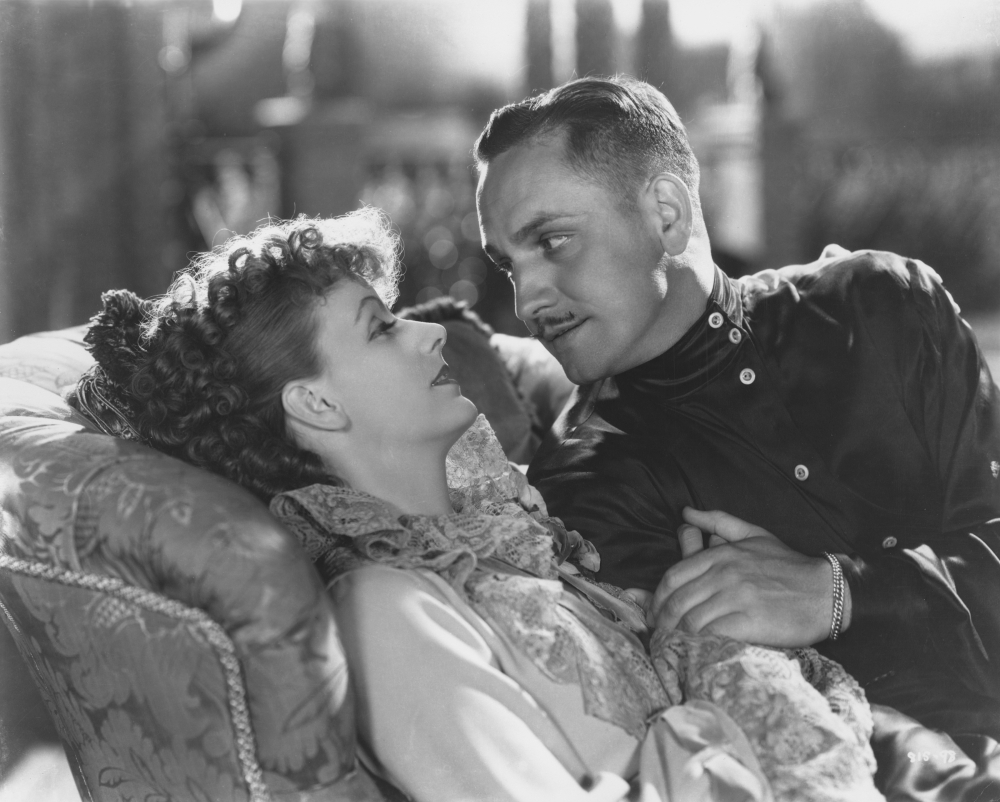
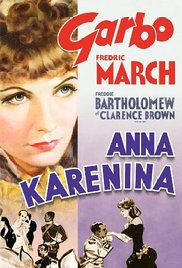 Greta Garbo’s appeal in the 1930s must have seemed otherworldly to movie audiences. One senses in her an indomitable strength; she’s a liberated woman in a pre-liberation world. This contributes to a remarkably contemporary feel to even her silent film work—she could always stand on her own, a regal superstar replete with dazzling, Swedish-born confidence and bone structure, needless of a man for protection or completion. So she seems radically miscast as Tolstoy’s tortured heroine, though she garnered the Best Actress award that year from the newly-formed New York Film Critics Circle (she missed getting an Oscar nod, and I assume the NY critics were dying to give her a Best Actress award). Part of the problem here is that she’s dealing with a severely truncated film version of this massively classic novel. The screenwriters lopped away major chunks of the story, eschewing necessary provocations and barely-touched-on supporting characters in favor of time-wasting spectacle (much pointless Russian dancing and singing squanders its economical 90 minutes). Worse yet, the film’s central concern is her unconvincing romance with Frederic March’s sternly dull Count Vronsky, and yet it infuriatingly never justifies this relationship. I’m sure Tolstoy filled in the blanks.
Greta Garbo’s appeal in the 1930s must have seemed otherworldly to movie audiences. One senses in her an indomitable strength; she’s a liberated woman in a pre-liberation world. This contributes to a remarkably contemporary feel to even her silent film work—she could always stand on her own, a regal superstar replete with dazzling, Swedish-born confidence and bone structure, needless of a man for protection or completion. So she seems radically miscast as Tolstoy’s tortured heroine, though she garnered the Best Actress award that year from the newly-formed New York Film Critics Circle (she missed getting an Oscar nod, and I assume the NY critics were dying to give her a Best Actress award). Part of the problem here is that she’s dealing with a severely truncated film version of this massively classic novel. The screenwriters lopped away major chunks of the story, eschewing necessary provocations and barely-touched-on supporting characters in favor of time-wasting spectacle (much pointless Russian dancing and singing squanders its economical 90 minutes). Worse yet, the film’s central concern is her unconvincing romance with Frederic March’s sternly dull Count Vronsky, and yet it infuriatingly never justifies this relationship. I’m sure Tolstoy filled in the blanks.
In each decade of cinema and television, we’ve been offered numerous adaptations of this famous tragedy, and so there are certainly those that spin the yarn better than profligate producer David O. Selznick and unprepared director Clarence Brown have in this Cliff Notes-flavored jot (I’d recommend the British 1948 version with Vivien Leigh or even the gorgeous 2012 retelling with Keira Knightley, both of which feature willowy actresses better suited for the lead). Garbo had already done a version of the story in 1927 for director Edmund Goulding’s Love, and so that might further explain her not throwing herself fully into this MGM production. To get the job demanded of her done, she really needed only to look effortlessly, forcefully gorgeous in velvety costuming while surrounded by Cedric Gibbons’ exuberant set dressings (it’s a beautiful movie to look at, though the mostly luminous William Daniels photography reveals the bedeviling shadow of the boom mike in at least one key scene). It’s wonderful to see her laughing and looking like a queen. But this is not enough.
One senses in her an indomitable strength; she’s a liberated woman in a pre-liberation world. This contributes to a remarkably contemporary feel to even her silent film work—she could always stand on her own, a regal superstar replete with dazzling, Swedish-born confidence and bone structure, needless of a man for protection or completion.
The big problem here: Why does Anna jettison her marriage to charismatic Basil Rathbone, who’s never shown doing anything even slightly objectionable to her? Even if he was the villain of choice in the ’30s, he’s clearly the more interesting and viable mate (Rathbone’s commanding performance is the best the film has to offer). Given they share a son (irritating Freddie Bartholomew) to whom Anna—in scenes added by Selznick to beef up Bartholomew’s role–shows a smothering love, one surmises she has more to lose than to gain with an affair, especially to a drunken cad like March’s Count Vronsky, who first glimpses her stepping off a train while veiled intriguingly by smoke and is instantly smitten (he could’ve easily been more in love with the smoke than with Anna).
One moment, she’s resisting Vronsky’s moon-eyed advances, and in the next she’s accepting them as true adoration. It doesn’t work. And it makes you angry that the filmmakers have just left it up to audiences to accept the leads’ sheer attractiveness as evidence of unassailable romance. March sits cockily with his broken moustache, never fully articulating his reasons for interrupting Anna’s marriage. The consequences do not matter to him. When it’s all over, and Anna has thrown herself on the train tracks (in a confusing, lackluster climax that, due to the censorious Hays Code, doesn’t mention that she’s pregnant with his baby), Vronsky lounges, dark-eyed and feeling sorry for himself, while a friend tells him to just forget her (crowing about her assured forgiveness) as a smiling portrait of Garbo’s Anna looms nearby, unable to provide a fitting defense. Anna is literally thrown under the bus. Yuck. I demand more from a Garbo role—she deserves better. I bet Tolstoy, too, would hold major objections to this hack job. Give me Queen Christina any day. That’s the prime Garbo film performance, driven by the muscle and verve with which she was synonymous.
Queen Christina
(1933, Metro-Goldwyn-Mayer, dir. Rouben Mamoulian)
by Jim Tudor
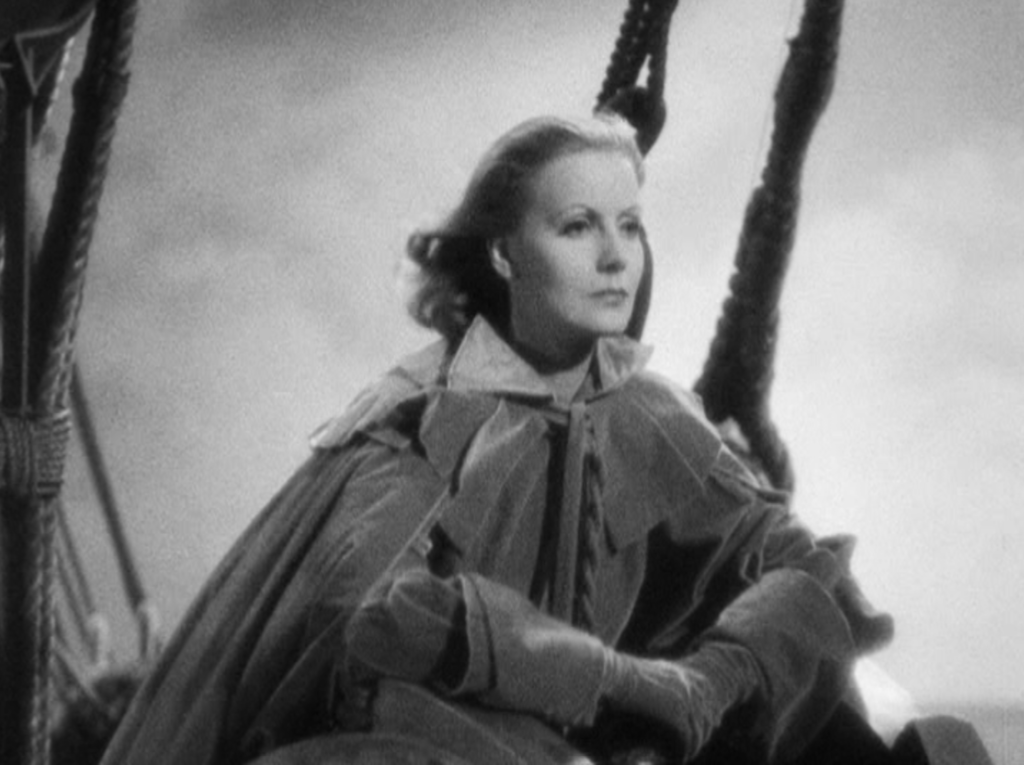
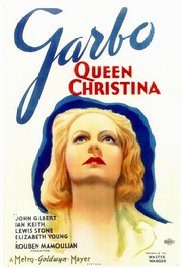 By 1933, Garbo’s star was such that crowning her queen of her native Sweden was a forgone conclusion. Or at least, casting her favorably as the royal daughter of the conquerer of the one-time Swedish empire, King Gustav II Adolph.
By 1933, Garbo’s star was such that crowning her queen of her native Sweden was a forgone conclusion. Or at least, casting her favorably as the royal daughter of the conquerer of the one-time Swedish empire, King Gustav II Adolph.
If Garbo is famous for being enigmatic, sensual, and luminous, then Queen Christina must her at the apex of so much of that. I confess to not having seen most of her work, although this film’s reputation as one of her very best rendered it a go-to selection for this exercise. As directed by the exceptional visualualist Rouben Mamoulian, Queen Christina is a cinematic standout of the pre-code, early talkie era. Mamoulian is noteworthy for several reasons, and for me, continues to be a favored, highly fascinating filmmaker. Although he only made less than twenty films, with a pronounced slowdown between 1942’s The Rings on Her Fingers and 1957’s Silk Stockings, he nonetheless broke new ground in terms of how a movie camera, and everything and everyone around it, can and should be used in the interest of unique storytelling.
Coincidentally, I watched Queen Christina almost right after an umpteenth viewing of Goldfinger. Lo and behold, there’s a similarity: Both films have female leads of, shall we say, an overt predilection to their own gender. They’re never cunningly never identified as such, but, you know. Before the end characters are not only won over by the love of a man, but their lives are radically altered by its effects on them. (Although in Pussy Galore’s case, “love” is a purely physical description.) Such is the power of the patriarchy, we’re told.
Yet, Garbo’s power is undeniable at this point, both on screen and off. Queen Christina, to its credit, drove me to historical research. (Even before I had to look up “King Gustav II Adolph” for this piece.) How much of this is true and how much is made up? Because, if classic Hollywood movies have taught me one thing, it’s not to trust classic what classic Hollywood movies teach. It turns out that Sweden does indeed have a monarchy – something that had eluded me despite intentionally focusing, on and off, on Swedish films for over a decade. Apparently the population’s focus and obsession with their own ruling class is much less pronounced than that of, say, England. Christina, in 1632, became the queen of Sweden at the young age of six. Per the film, she quickly grew into Greta Garbo.
The permissive pre-code era of the early 1930s was the perfect stomping ground for Garbo’s androgynous superstardom, wearing trousers, kissing women, and whatnot. In the end of this film she may be voluntarily done in by the love of John Gilbert (her previous real lover), but she nonetheless radiates on. No less than David Bowie cited her in his song “Don’t Believe in Yourself”, claiming “I’m the twisted name on Garbo’s eyes”. Her cultural scene would shift soon enough, leading Hollywood to kill her off again and again on screen. But for this glorious moment, Garbo was Queen.
Conquest
(1937, Metro-Goldwyn-Mayer, dir. Clarence Brown)
by Erik Yates
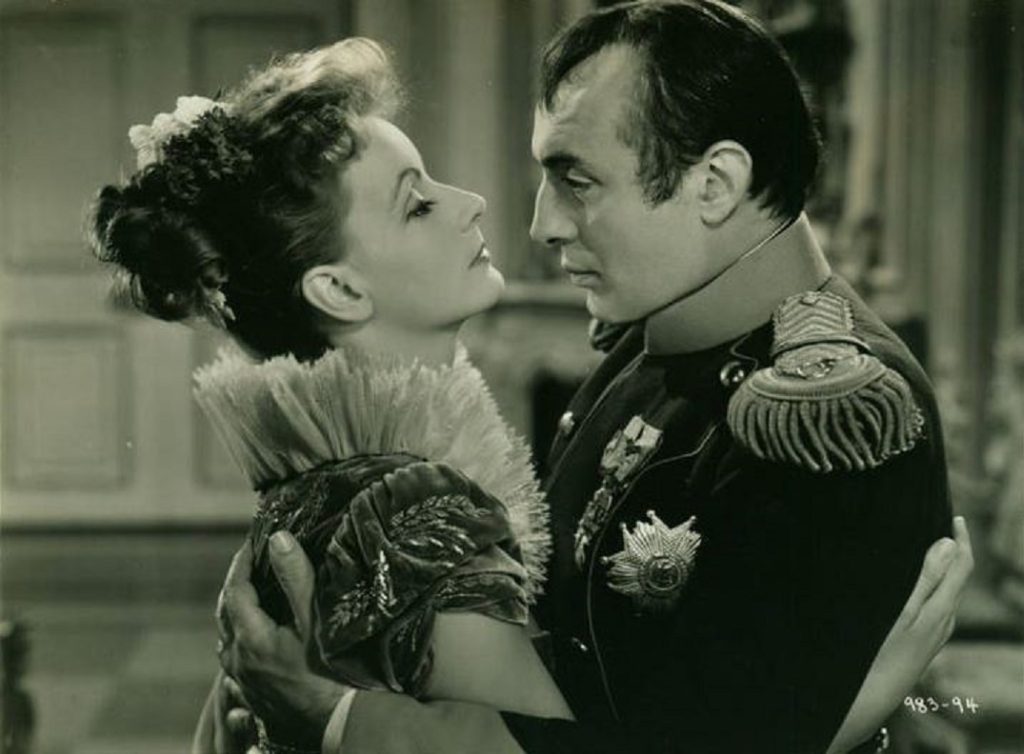
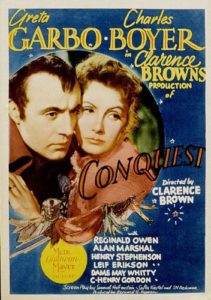 Greta Garbo is of course a name I know, but until now, I must admit (and isn’t that the point of this exercise?) that I had never seen one of her films. I knew, like many do, that she was perhaps best known for Anna Karenina, but again, this meant nothing having not seen her other work. I chose to watch one of her last films, Conquest. She only made two more following it, before retiring from Hollywood, and I was caught off guard by the boldness of the film given its 1937 release date.
Greta Garbo is of course a name I know, but until now, I must admit (and isn’t that the point of this exercise?) that I had never seen one of her films. I knew, like many do, that she was perhaps best known for Anna Karenina, but again, this meant nothing having not seen her other work. I chose to watch one of her last films, Conquest. She only made two more following it, before retiring from Hollywood, and I was caught off guard by the boldness of the film given its 1937 release date.
The opening scene shows a mob whose army is threatening Poland’s sovereignty shooting a gatekeeper in cold blood when he denies them access to Count Walewski’s estate. A noble man of 75 years, we discover that his third wife, after being twice widowed, is the very beautiful Countess Marie Walewski, played by Garbo. She is quite infatuated with Emperor Napoleon Bonaparte whose French army is in Poland to perhaps save it from this threat. Being a patriot, she rides off to get a glimpse of him. He sees her and is quite taken by her beauty. When they meet again at a formal ball in his honor, Napoleon decides he will have her, despite her marriage to the Count. Several politicians tell her, that she should use Napoleon’s infatuation with her to help secure Poland’s freedom, even to the dismay of her husband who will hear no more of what they are asking his wife to do. When she goes along, she loses her noble husband, and becomes Napoleon’s mistress.
Based on a true story, Garbo’s portrayal was both fascinating and maddening. She comes off as a loving and doting wife initially, and then just a scene later is straight-up flirting with Napoleon like a groupie at a rock concert. Next she is bothered by his interest in her, and when she does go to him the first time following the suggestion of the Polish politicians, she is angry and rebuffs his advances. In a very dark scene, the implication is that when she tries to leave before anything happens, Napoleon grabs her and forces the door shut against her will. We later learn that off-screen they had sex, but the way the scene went down, you’d believe it was rape. Garbo, rather than using that dark scene, and the subsequent loss of her husband, to demonstrate an emotionally complex character who is holding it together for the love of country, spends the rest of the film doting on Napoleon as her true soul mate that finally saved her from a dead-end marriage, despite being the doting wife as I mentioned. This is what was extremely maddening. The fascinating aspect was her portrayal of Marie when interacting with Napoleon (Charles Boyer) as the film focused on their love story. By ignoring her political reasons for being with him, you could simply focus on theirs as a tragic love story that never was to be, as his obsession with “conquest” came with a cost. Conquest was an interesting first foray into Ms. Garbo’s film catalogue, but it wasn’t one that won me over either.
Camille
(1936, Metro-Goldwyn-Mayer, dir. George Cukor)
by Taylor Blake
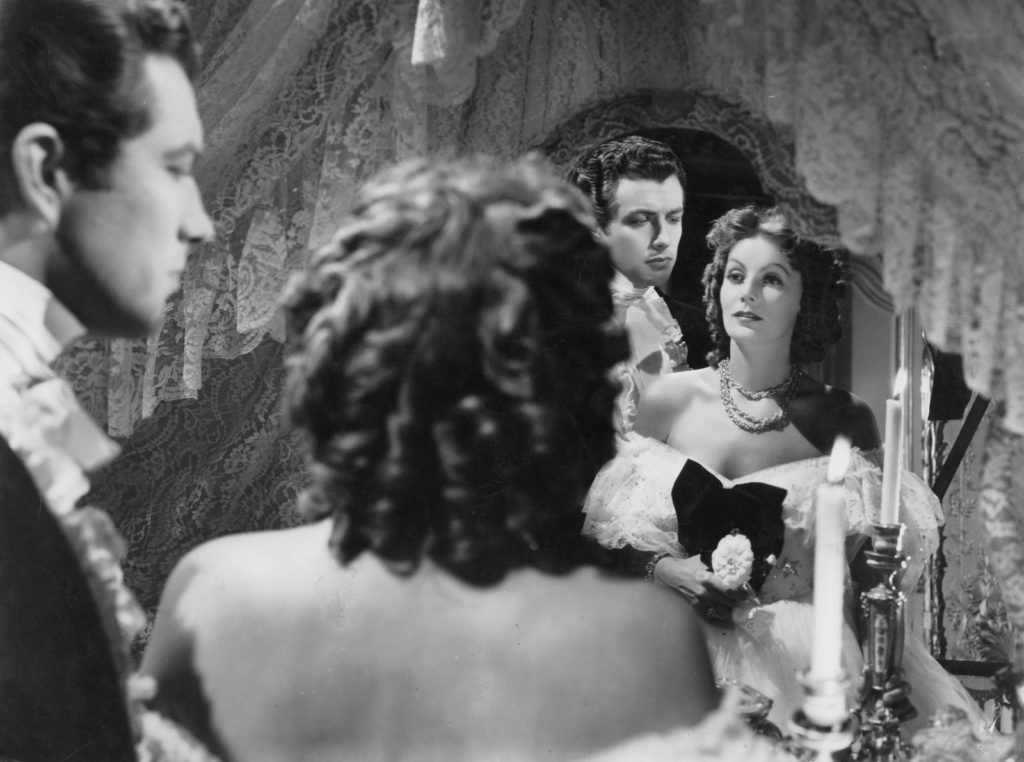
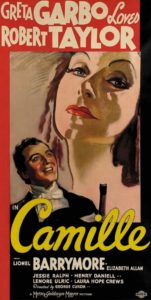 By today’s standards, Camille is melodramatic and predictable: Think ball gowns a mile wide, a duel, and a tuberculosis victim. Greta Garbo plays a spendthrift socialite in 1847 Paris. Her heart is torn between the Baron de Varville who can pay her debts (Henry Daniell) and the kind but not-nearly-as-wealthy Armand (Robert Taylor). Amid the love triangle, she fights the gossip of nominal friends and her deteriorating health.
By today’s standards, Camille is melodramatic and predictable: Think ball gowns a mile wide, a duel, and a tuberculosis victim. Greta Garbo plays a spendthrift socialite in 1847 Paris. Her heart is torn between the Baron de Varville who can pay her debts (Henry Daniell) and the kind but not-nearly-as-wealthy Armand (Robert Taylor). Amid the love triangle, she fights the gossip of nominal friends and her deteriorating health.
You’ll likely end the movie one of the three ways the characters in 1982’s Annie did when they saw Camille on their trip to the movies. You might be in tears like Grace because of the tragic ending, baffled like Daddy Warbucks because of its overblown schmaltz, or asleep like Annie because it could have ended an hour ago. So perhaps Camille would be melodramatic and predictable in all eras after all.
That said, Garbo’s name and reputation have endured for a reason. My first viewing with her felt like a twin to last month’s Sean Connery film admission. Like Connery, she’s an actress who can carry a whole film with just her charisma. In the words of the great sage Madonna, Garbo was one of the original “ladies with an attitude,” and she shows her wide range even in the sensationalized Camille. She can flip from manipulative to heartbroken in the same scene and is empathetic even when treating the man who loves her like an inconvenient trifle. To call her “beguiling” feels cliché, but with that determined of a gaze, there may not be a better one-word descriptor of her powerful screen presence.
Ninotchka
(1939, Metro-Goldwyn-Mayer, dir. Ernst Lubitsch)
by Sharon Autenrieth
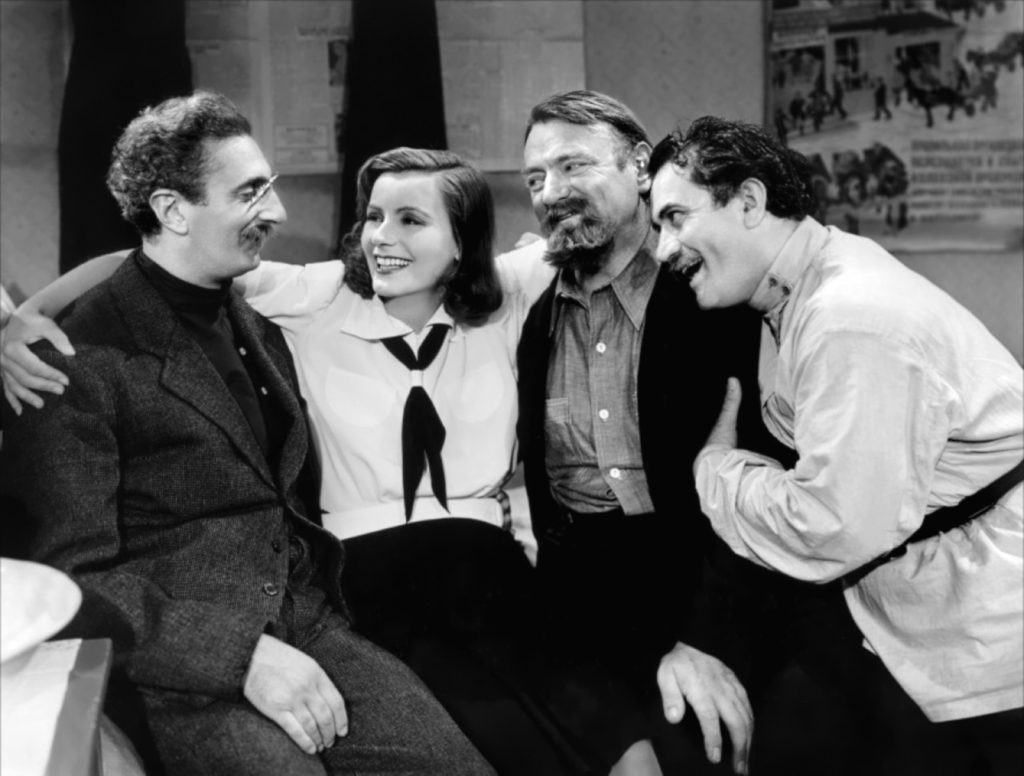
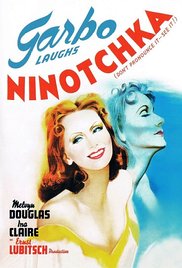 Ninotchka is such a winner of a film, I can’t imagine how it’s escaped my attention for all of these years. The movie was advertised with the line “Garbo laughs!” (a play on the tagline for Garbo’s first talking film, Anna Christie), and the key laughing scene, when it comes, is a genuine delight. But Garbo had already won me over long before that scene, with her depiction of a Soviet envoy who is a true believer in the revolution.
Ninotchka is such a winner of a film, I can’t imagine how it’s escaped my attention for all of these years. The movie was advertised with the line “Garbo laughs!” (a play on the tagline for Garbo’s first talking film, Anna Christie), and the key laughing scene, when it comes, is a genuine delight. But Garbo had already won me over long before that scene, with her depiction of a Soviet envoy who is a true believer in the revolution.
Greta Garbo specialized in dark, tragic roles. Here, in Ninotchka, she bends that persona into a woman who is initially cold, stiff, and ruthless. Ninotchka is on assignment in Paris and she has no patience for the city’s romanticism. The City of Lights is, to her, just a waste of electricity. But that’s before she’s spent time with Count Leon D’Algout (Melvyn Douglas), a rakish playboy who is, somewhat implausibly, drawn like a magnet to grim faced Ninotchka. One of the movie’s great strengths is watching the battle of ideologies played out in the context of a budding romance. The crackling script by Billy Wilder, Charles Brackett, and Walter Reisch gives ample opportunity for Ninotchka to deliver zingers at Leon (“We don’t have men like you in my country…that is why I believe in the future of my country.”), but Ninotchka can’t long resist Leon’s charms – and the charms of champagne, western music, posh hotel suites and silly hats. And how are you going to keep a girl down on the collective after she’s been to to the city?
As for Garbo’s performance, it’s just right. It’s enjoyable to watch her softened and transformed, but the pre-love Ninotchka, with her withering sarcasm and steely gaze, is my kind of gal.
Ninotchka delivers the rapid-fire wit of movie like His Gal Friday and Ball of Fire, but also offering surprising and potent political commentary. Revolutions happen for real reasons, and even as Ninotchka mocks the austerity and authoritarianism of Soviet era Russia, the film skewers what came before (a Russian duchess living in exile laments that the cossacks used whips on the peasant when “their guns worked so well”).
As for Garbo’s performance, it’s just right. It’s enjoyable to watch her softened and transformed, but the pre-love Ninotchka, with her withering sarcasm and steely gaze, is my kind of gal. And for the record, that aforementioned hat, which she will later purchase and wear? She was right about it in the first place: “How can a civilization survive which permits their women to put things like that on their heads?” It is, in fact, a very silly hat.
The Saga of Gösta Berling
(1924, Svensk Filmindustri, dir. Mauritz Stiller)
by Justin Mory
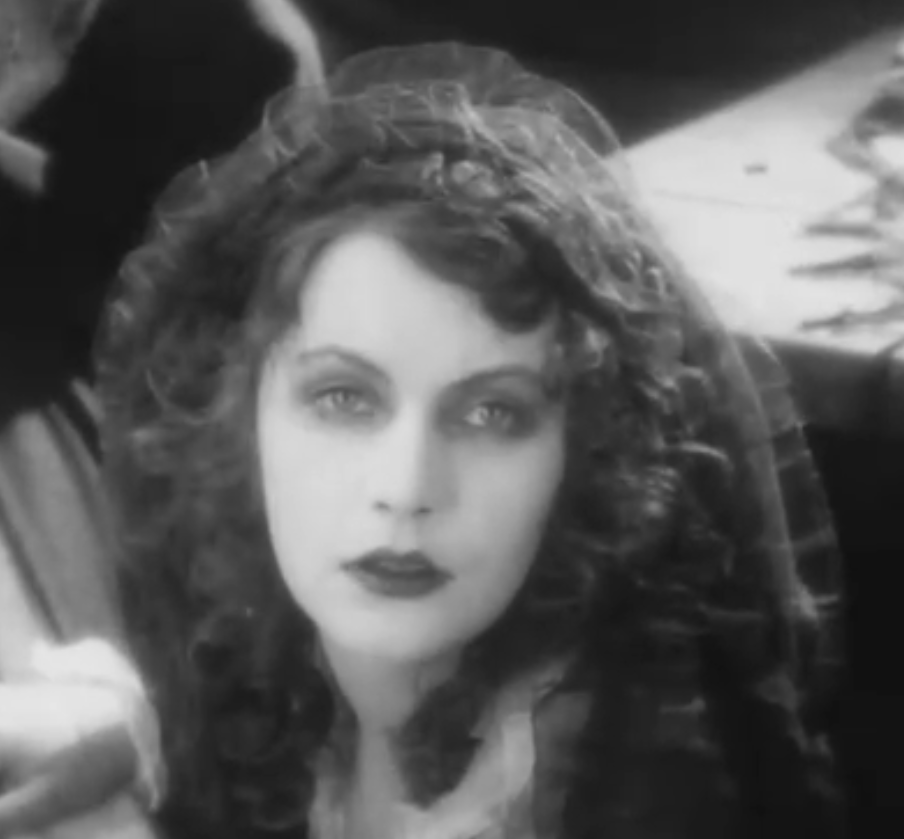
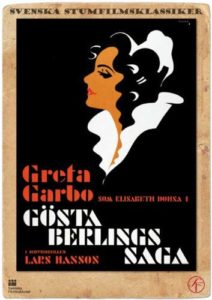 The magic of early Swedish cinema remains undimmed across 90 years of intervening film history, and the magnetic Greta Garbo, as the passionate Elizabeth Dohna, virtually embodies the near-mystical sturm und drang of the stark Northern European landscape and the flickering shadows of hearth fire. The 18-year-old actress appears pleasingly plumper in her first (and final) film role essayed in her native Sweden, yet projects incipient charm, grace, and mystique with each half-mast flash of her soon-to-be world-famous eyelashes. As guided by her discoverer and initial screen mentor, leading Swedish filmmaker Mauritz Stiller, the “look” of Garbo is as important, if not more so, as the drama that unfolds to spellbinding effect in the great silent epic that first introduced this personality and “presence” to the world.
The magic of early Swedish cinema remains undimmed across 90 years of intervening film history, and the magnetic Greta Garbo, as the passionate Elizabeth Dohna, virtually embodies the near-mystical sturm und drang of the stark Northern European landscape and the flickering shadows of hearth fire. The 18-year-old actress appears pleasingly plumper in her first (and final) film role essayed in her native Sweden, yet projects incipient charm, grace, and mystique with each half-mast flash of her soon-to-be world-famous eyelashes. As guided by her discoverer and initial screen mentor, leading Swedish filmmaker Mauritz Stiller, the “look” of Garbo is as important, if not more so, as the drama that unfolds to spellbinding effect in the great silent epic that first introduced this personality and “presence” to the world.
From Griffith and Chaplin to F.W. Murnau and Abel Gance, world cinema of the first quarter of the twentieth century was unavoidably haunted by the cultural, historical, and artistic specter of the previous century and, appropriately, director Stiller chose the 1891 novel Gösta Berlings Saga, with its very title announcing the Scandinavian folk heroics of the Long Ago and the Far Away, as subject for his most ambitious production. Evoking the romantic setting of 1820s Värmland, with opening shots of snow-covered hills, rolling meadows, dark forests, and ice-flowing streams, the story follows defrocked Lutheran priest Gösta Berling (Lars Hanson) as he descends morally and spiritually from the high collar and higher perch of his calling to the low companions and lower haunts of his wine and ale-soaked degeneration. Finding refuge at the magnificent, ice palace-like estate of Ekeby, Berling becomes one of Ekeby’s “12 Knights”; a wild group of revelers who entertain their aristocratic betters at screen-spectacular soirées, gradually taking uneasy control away from the estate’s grand mistress (Gerda Lundequist) as the balance of the narrative teeters perilously towards wrack and ruin.
With the dizzying melodrama enacted in its cavernous interiors equal to the overwhelming beauty of its natural surroundings, Gösta Berling achieves precisely the manner of otherworldly, “heightened” screen reality that virtually vanished when the spell of silence was broken by the introduction of sound. The link, in my estimation, is the one screen figure who successfully made the transition between one level of “reality” to the next: Garbo herself. Kept offscreen for much of its 183-minute running time by the demands of the film’s narrative – wherein Gösta lay emotionally tortured by Elizabeth’s very absence – its climactic sequence finds Gösta and Elizabeth on a speeding sleigh pursued by ravenous wolves across a frozen expanse of wintry wasteland. As the type of sequence that only seemed to work, and remain powerful, by the retraction of sound, the silent glance of accord between the two lovers at their moment of shared extremity announces the arrival of a great screen idol: inspired by a soul-searing look, captured at precisely the right moment of screen impact in beguiling close-up, Gösta Berling spurs his steam-exhaling steeds forward to safety, redemption, and ultimately to the fulfillment of destiny.

